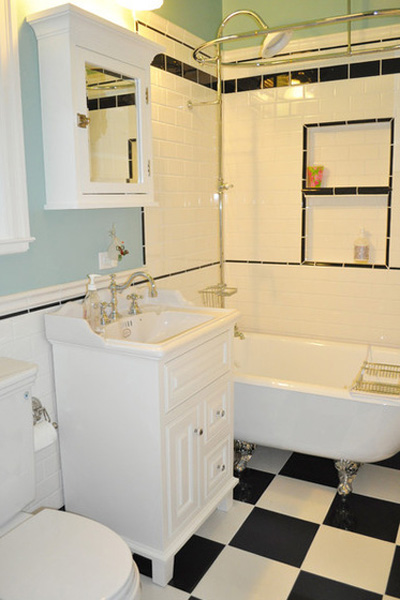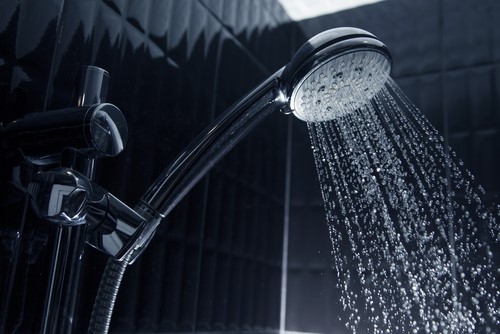5 Acrylic Shower Room Troubles as well as Solutions
5 Acrylic Shower Room Troubles as well as Solutions
Blog Article
{Visit Website The article author is making a few good annotation on Things To Look Out for Before Hiring a Plumbing Company overall in this post down the page. We recommend that you clean your acrylic bathing product made of Delta ProCrylic or Acrylic with Innovex Technology with non-abrasive soaps and cleaners, such as: When it’s time to clean, always use a terry cloth towel, soft cloth or sponge to avoid scratching the acrylic surface. Don’t use abrasive scrubbing pads, steel wool or sponges, cause permanent damage to the acrylic material. If you use a drain cleaner or clog remover, be sure to rinse thoroughly with water so no product is left standing near the drain. Some chemicals and cleaners may deteriorate acrylic surfaces, causing cracks and, potentially, property damage. To avoid this, don’t use cleaning products that state on their label that they are not suitable for use on Acrylic, ABS, Polystyrene or Plastic. Be sure to check the label of any product before you apply it to the surface; it’s easier to avoid damage than to try to remedy it. Chemicals we do not recommend using to clean acrylic showers/tubs: When you’re ready to apply sealant, a little planning goes a long way. Pick up some painter’s tape and use it to mask off the seam to help make cleaning up easier. When you’re applying the bead, use a constant, steady speed to avoid an uneven finish. Use a caulk tool or a plastic spoon to work the sealant into the joint. Wetting the tool with denatured alcohol will help create a smooth finish. Follow the directions on the back of the tube for cure time. Certain chemicals and cleaners may deteriorate acrylic surfaces, causing cracks and, potentially, property damage. After you’re finished applying it, clean up the product surface and remove any excess sealant with denatured alcohol. Don’t use solvents (turpentine, lacquer thinner, mineral spirits, paint thinner, MEK, xylene, acetone, naphtha, etc.) that can wreak havoc on an acrylic surface. With a little care and consideration, you can prevent damage to your acrylic shower or tub. Keep a supply of soft cloths handy and remove any damaging products or abrasive scrubbing items from the bathroom to ensure they aren’t around when it’s time to clean. https://www.deltafaucet.com/design-innovation/inspiredliving/how-to-clean-acrylic-shower I discovered that blog posting about Hiring a Plumbing Expert when looking around the web. Kindly take the time to distribute this article if you enjoyed it. I praise you for your time. Come back soon.
Polymer bathrooms, shower trays, and also various other acrylic washroom ware have actually become more common in restrooms in recent times. Thanks to modern chemistry we now have choices to enamel and also ceramic products for washroom components. These consist of plastic materials and different polers. Though not as classy and durable as enamel and porcelain baths and components, they are extra economical as well as serve practically the same basic purpose. These materials are simple to make, store, and transportation and also in the incidence of damages, they are easily repaired. Some usual examples of damages to acrylic shower room fixtures consist of discoloration, cracks, holes, and so on. Allow's take a look at some of these problems and fast means of repairing them.Bath Staining
With extended use of acrylic bathrooms comes discoloration or discoloration. While some spots can be removed conveniently, utilizing unique chemicals, others call for that the bath be resprayed. It is necessary to note that bleach or detergents do really little in removing such discoloration as well as they might even intensify it. The majority of times, these cleansing agents cause discoloration gradually. Aromatherapy oils loosen up the dirt sometimes consequently restoring the bath to its former magnificence. Cleansing and also polishing likewise often. For even more stubborn stains, you will require a new layer of finishing. This type of dealing with will certainly call for a professional.Chemical Reactions
Often, people attempt to repaint the entire surface area of their acrylic bathroom by themselves either since they do not like the shade to conceal blemishes. You need to never ever utilize paint remover on acrylic bathrooms. Paint cleaners do not react with the surface area of metal bathrooms, they destroy acrylic bathrooms irreversibly.Scraped shower or bath surface area
Acrylic shower room fixtures are not abrasion-resistant like enamel selections. Being a very soft product, acrylic scratches can also be concealed without finishing or dental filling. For these, you ought to look for professional assistance for your bath repair work.Broken Polymer Baths
The life expectancy of acrylic and also fiberglass bathrooms is up to 15-20 years for shower frying pans as well as bathrooms, typically. Splits in an acrylic shower tray are probably amongst the easiest issues to fix for a repair work professional. The best component is you reach see the results practically immediately. This is the same for PVC, material, and other such materials. A minute fracture have to be attended to on schedule prior to it spreads out further resulting in a lot more severe damage. While these can be fixed on a budget plan tackily, a professional can help you get it done with more finesse for a charge. Quick residence fixes can be finished with epoxy materials yet if the outcome ends up poorly, this would make the repair work a lot more tough for a professional.
Acrylic baths, shower trays, and other acrylic restroom ware have become much more common in restrooms in recent times. With prolonged use of acrylic baths comes discoloration or discoloration. You should never ever utilize paint cleaner on acrylic baths. Paint removers do not react with the surface area of steel bathrooms, they ruin acrylic baths irreversibly. The lifespan of acrylic and fiberglass bathrooms is up to 15-20 years for shower frying pans and also bathrooms, generally.How to clean Acrylic shower
USE THESE NON-ABRASIVE CLEANERS
DO NOT USE THESE CLEANERS
Sealant Application Tips

Emergency Plumbing